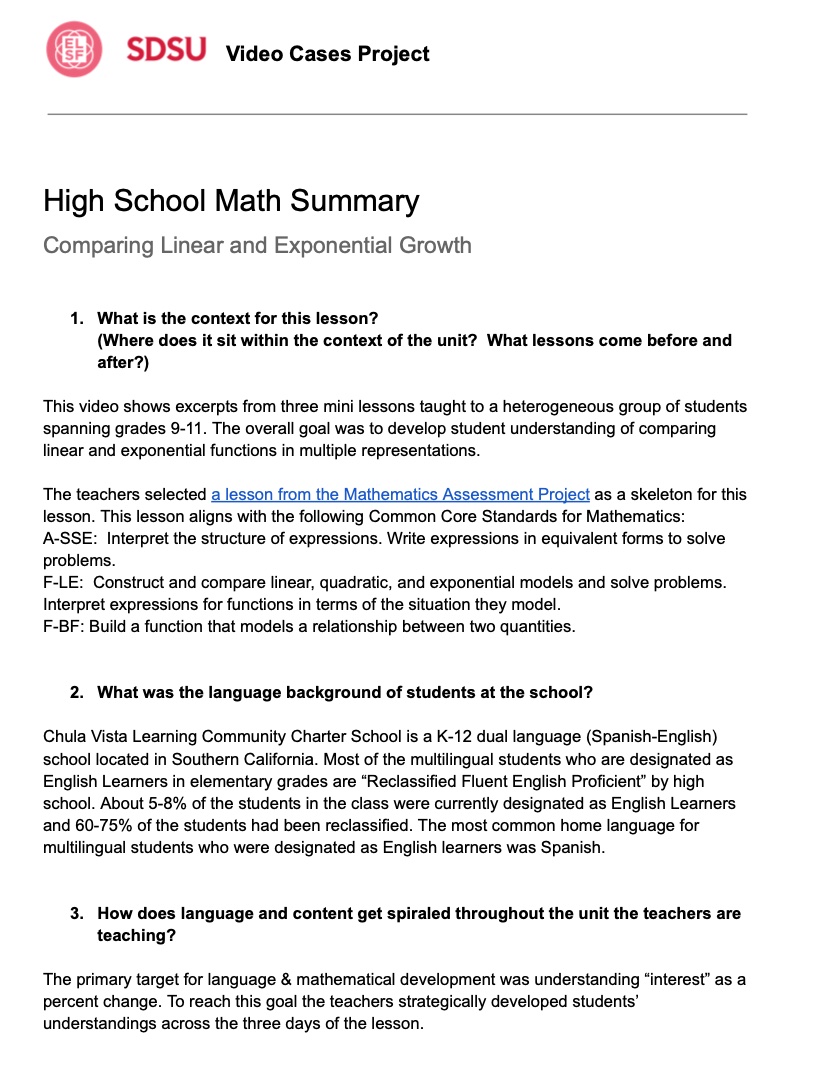Comparing Simple and Compound Interest
School: Chula Vista Learning Community Charter. Teachers: Josue Gonzalez, Brenda Melendrez, & Jessica Avila
What is the context for this lesson?
This video shows excerpts from three mini lessons taught to a heterogeneous group of students spanning grades 9-11. The overall goal was to develop student understanding of comparing linear and exponential functions in multiple representations.
The teachers selected a lesson from the Mathematics Assessment Project as a skeleton for this lesson. This lesson aligns with the following Common Core Standards for Mathematics:
A-SSE: Interpret the structure of expressions. Write expressions in equivalent forms to solve problems.
F-LE: Construct and compare linear, quadratic, and exponential models and solve problems. Interpret expressions for functions in terms of the situation they model.
F-BF: Build a function that models a relationship between two quantities.
How are scaffolds embedded throughout the lesson and unit to support learning?
On the first day, the teachers intentionally asked an open-ended question to elicit students’ meanings for “interest”. Then, they used a Collect and Display routine to capture students’ language. Next, the students created a foldable with the word interest to formalize the mathematical meaning of interest as a percent change.
On the second and third days of the lessons, the teachers referred back to the meanings from the first day of the lesson to reinforce the mathematical meaning of interest. On both of these days, students applied the concept through solving problems related to percent changes, and comparing simple (linear) and compound (exponential) interest.
What makes this lesson culturally and linguistically responsive?
First the teachers accessed and built upon students’ understanding of the concept of interest. The teachers did not reject students’ everyday understanding of this concept, but rather built on it. Second, the teachers intentionally incorporated a lesson context that was relatable and interesting to students: How much money do you lose when you change money at a “casa de cambio?” This topic was introduced using a video from a news clip that discussed the hidden fees consumers often pay when changing money. Incorporating this context sparked students to relate the mathematics to their lived experiences.
Lesson Materials


